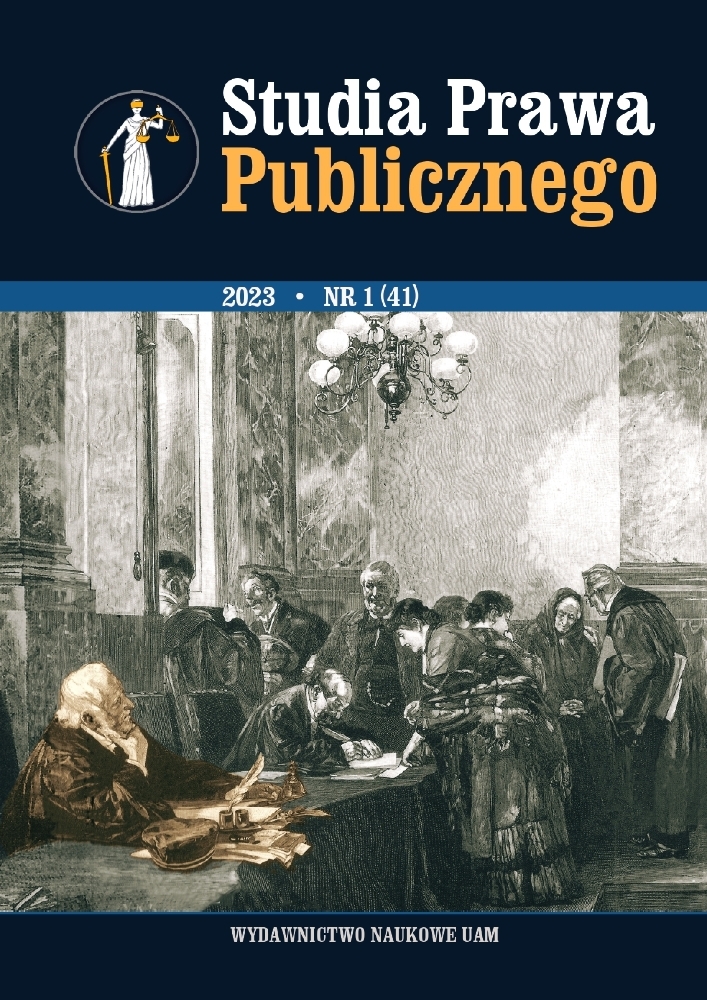Abstrakt
The aim of this article is to present legal solutions showing the legal position and basic functions of a voivode, taking into account the definition of his constitutional position in the period from the Second Republic of Poland to the present. This is an organ of government administration that has appeared in the system of administrative bodies since the interwar period, with the exception of the years 1950–1973. This interval was the result of the solutions adopted in the Act of 20 March 1950 on local organs of uniform state authority. The competences of voivodes were then assumed by the presidencies of the voivodeship national councils as the executive and managing bodies of these councils. It was not until the amendment of the Constitution on 22 November 1973 and the enactment on the same day of the Act amending the Act on National Councils that new regulations were introduced, whereby collegial bodies at the voivodeship and poviat levels (presidia) were replaced with monocratic bodies. The solutions adopted in 1999 clearly refer to the interwar solutions, rendering the voivode both the representative of the Council of Ministers in the voivodeship and granting them many competences as a result, as well as the head of the combined government administration in the voivodeship. Recent years and changes in legislation (not least in the Act on the Voivode and Government Administration in the Voivodeship) have significantly strengthened the voivode’s position as a political body. The adopted solutions have clearly subordinated the voivode to the Prime Minister in both the official and personal sphere. The Prime Minister directs the activity of the voivode, issuing guidelines and orders in this respect, demanding the submission of reports on the activity of the voivode and conducting a periodic evaluation of their work, in addition to supervising the activity of the voivode based on the criterion of the compliance of his/her actions with the policy of the Council of Ministers.
Bibliografia
Chmaj M., Geneza urzędu wojewody, w: Status prawny wojewody, pod red. M. Chmaja, Warszawa 2005, s. 9–23.
Chmaj M., Golat K., Pozycja ustrojowa i zadania wojewody, w: Status prawny wojewody, pod red. M. Chmaja, Warszawa 2005, s. 24–54.
Ciapała J., Administracja rządowa w terenie, w: Rada Ministrów. Organizacja i funkcjonowanie, pod red. A. Bałabana, Kraków 2002, s. 402–445.
Czarny P., Art. 152, w: Konstytucja Rzeczypospolitej Polskiej. Komentarz, wyd. II, pod red. P. Tulei, LEX/el 2021.
Dobkowski J., Pozycja prawnoustrojowa służb, inspekcji i straży, Warszawa–Kraków 2007.
Dziemińska-Masło M., Organizacja i funkcjonowanie terenowej administracji rządowej w II Rzeczypospolitej, Warszawa 1982.
Jaroszyński M., Zimmermann M., Brzeziński W., Polskie prawo administracyjne. Część ogólna, Warszawa 1956.
Polinceusz M., Funkcje wojewody. Studium administracyjnoprawne, Rzeszów 2010.
Służewski J., Wojewoda w systemie administracji państwowej, Warszawa 1981.
Ura E., Pozycja prawna wojewody, „Rzeszowskie Zeszyty Naukowe. Prawo, Ekonomia” 1991, t. 9, s. 103–120.
Wojtczak K., Pozycja prawna wojewody, Warszawa 1986.
Wojtczak K., Pozycja prawna wojewody w procesie przemian II Rzeczypospolitej, „Studia Prawa Publicznego” 2021, nr 3(35), s. 9–53. DOI: https://doi.org/10.14746/spp.2021.3.35.1
Zimmermann J., Prawo administracyjne, Warszawa 2005.
Zimmermann J., Prawo administracyjne, Warszawa 2020.
Licencja

Utwór dostępny jest na licencji Creative Commons Uznanie autorstwa – Bez utworów zależnych 4.0 Międzynarodowe.

